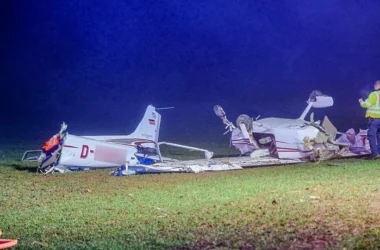On January 1 of this year, Russian gas supplies to Europe via Ukraine ceased. Despite the predictability of this change, its economic and political consequences continue to acquire new facets.
The media and expert community continue to discuss ways to resume transit
The transit of Russian gas to Europe lasted for almost 55 years, and many experts believe that the end of such a long cooperation means the end of energy stability. And security, too, because, in their opinion, it was not the volume of supplies that played a key role, but their reliability and price predictability.
It is worth starting with the fact that Russian gas supplies have not been completely zeroed out: as of today, the pipeline route through Turkey and the Balkans remains in place, and supplies of liquefied natural gas from Yamal are also growing. At the same time, the media and expert community continue to discuss ways to resume gas pumping through Ukraine. No coincidence that the parties spent the entire 2024 looking for acceptable forms to continue transit, and the Ukrainian side itself, represented by Prime Minister Denys Shmyhal, in autumn 2024 allowed this on the condition that Russia was not the shipper. Only at the very end of 2024 President Volodymyr Zelensky announced the final negative decision.
Ukraine’s losses are much more critical in strategic terms
Speaking about the prospects of the aforementioned expert discussion, analysts emphasize fact #1: yes, the EU (especially Slovakia and Moldova) and Russia suffered from the termination of transit, but Ukraine’s losses are much more critical. Especially in such a difficult wartime.
Here is the proof. Slovakia loses about 200 million euros a year in revenue for the transit of Russian gas and will be forced to buy gas elsewhere at a higher price. If we assume that both with the preservation of Ukrainian transit and with its termination, gas prices in Europe would remain at the level of $300 per thousand cubic meters, then Russia would lose about $4.5 billion a year. However, if we assume that the termination of transit increased the price by about $100 per thousand cubic meters, then Russia has practically no losses at all.
Ukraine, however, began to lose most of its transit revenues much earlier: in the first six months of 2024, Naftogaz of Ukraine recorded 19 billion hryvnias in revenue for gas transit services, but at the same time the debt for these operations grew by 10.6 billion. Also, in the future, Ukraine will lose revenue from gas storage services in its gas storage facilities, the largest in Europe.
The era of European energy stability is over
It is important to emphasize that the share of supplies via Ukraine in the overall European gas balance was not critically large: according to 2023 data, it was only 5%. Based on this, experts conclude that the surge in European gas prices since January 1 was more speculative in nature than supported by purely financial criteria. Nevertheless, the consequences for the European economy are significant.
Now the energy market is affected by absolutely everything: from accidents on gas platforms on the Norwegian shelf to Trump’s return to the presidential chair and his territorial claims. His return to the ambition to buy out Greenland is further confirmation of the powerful influence of the United States on the global agenda. In addition to monetary losses, we are talking about the elimination of a strong, stable energy platform for development. And although European officials are trying to cover up the cracks in the budget, including by establishing the so-called emergency cap on gas prices, it is obvious that the era of energy stability in Europe is over.




